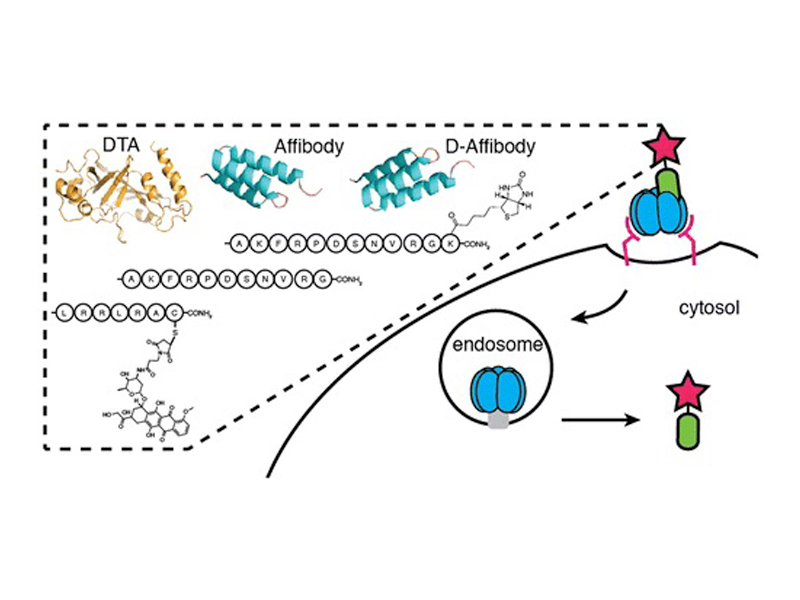
Delivery of Non-Native Cargo into Mammalian Cells Using Anthrax Lethal Toxin

Delivery of Non-Native Cargo into Mammalian Cells Using Anthrax Lethal Toxin
ACS Chem. Biol., 2016, 11 (6), pp 1490–1501
DOI: 10.1021/acschembio.6b00169
Publication Date (Web): April 8, 2016
Amy E. Rabideau and Bradley Lether Pentelute*
Abstract
The intracellular delivery of peptide and protein therapeutics is a major challenge due to the plasma membrane, which acts as a barrier between the extracellular environment and the intracellular milieu. Over the past two decades, a nontoxic PA/LFN delivery platform derived from anthrax lethal toxin has been developed for the transport of non-native cargo into the cytosol of cells in order to understand the translocation process through a protective antigen (PA) pore and to probe intracellular biological functions. Enzyme-mediated ligation using sortase A and native chemical ligation are two facile methods used to synthesize these non-native conjugates, inaccessible by recombinant technology. Cargo molecules that translocate efficiently include enzymes from protein toxins, antibody mimic proteins, and peptides of varying lengths and non-natural amino acid compositions. The PA pore has been found to effectively convey over 30 known cargos other than native lethal factor (LF; i.e., non-native) with diverse sequences and functionalities on the LFN transporter protein. All together these studies demonstrated that non-native cargos must adopt an unfolded or extended conformation and contain a suitable charge composition in order to efficiently pass through the PA pore. This review provides insight into design parameters for the efficient delivery of new cargos using PA and LFN.



